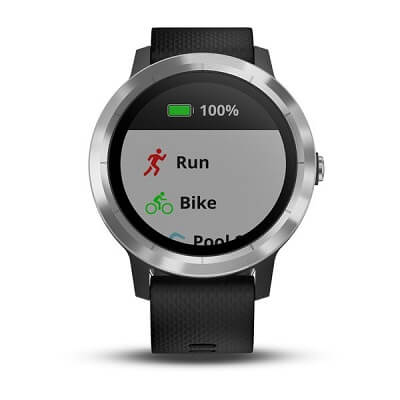In today’s fast-paced and often sedentary work environments, finding opportunities to stay physically active can be a challenge. Many individuals spend a large portion of their day sitting at a desk most of the time, which begs the question: Does walking at work count as exercise?
So, to get the quick answer to the question: Does walking at work count as exercise? Yes, Walking at work can contribute to physical activity levels, but whether it counts as exercise depends on intensity and duration. Brisk walking for a sustained period can meet exercise criteria, while a casual walk that keeps the heart beating in a relaxed position may not.
Walking is a natural and accessible form of physical activity that requires no special equipment or training. It is a low-impact exercise that can be easily incorporated into our daily routines, including the time spent at work. But does it provide the same benefits as structured exercise routines?
We will explore In this article, the concept of whether steps at work count as exercise and does it have potential influence on our health. We will examine different opinions, research, and expert thoughts to gain a comprehensive understanding of the topic. We seek to help individuals make better decisions about their physical activity levels while navigating the demands of the healthy workplace.
Does Walking at Work can be Considered Exercise?
It depends on various factors. While walking at work can provide some health benefits and contribute to overall physical activity levels, but, it may not always meet the criteria for structured exercise. Here are a few considerations that need to keep in mind to get results from walking:
- Intensity: The intensity of the walking is a key consideration. For it to be considered exercise, it should elevate your heart rate and breathing. Walking at a brisk pace, where you can still carry on a conversation but feel slightly breathless, is more likely to qualify as exercise compared to leisurely strolling.
- Duration: The duration of your walking sessions also matters. To meet exercise guidelines, aim for at least 120 minutes of moderate-intensity aerobic activity per week. Breaking it down, this translates to around 25 minutes per day for five days. While individual sessions of walking at work may not meet this requirement, you can accumulate the time throughout the week to reach the recommended goal.
- Consistency: Consistency is key for any exercise regimen. While a single session of walking at work may not have the same impact as a structured workout, engaging in regular walking throughout the workweek can still have significant health benefits. Aim to incorporate walking into your daily routine and make it a consistent habit.
- Additional Forms of Exercise: Walking at work can complement other forms of exercise. It can be a valuable addition to a complete fitness routine that includes strength training, high-intensity workouts, or targeted exercises for specific muscle groups. Combining walking at work with other activities can help meet overall exercise requirements and provide a well-rounded approach to fitness.
- Personal Fitness Level: Consider your current fitness level and goals. Walking at work may be an effective form of exercise for beginners or individuals with mobility limitations. However, those who are more physically fit and looking for more challenging workouts may need to incorporate additional activities to meet their specific fitness needs.
Remember that any form of physical activity, including walking at work count as moderate exercise, and is beneficial for overall health. Even if it doesn’t meet the strict definition of structured exercise.
Research Studies and Expert Opinions that count Walking as Exercise
Research studies and expert opinions support the notion that walking can indeed count as exercise. Here are some key findings from studies and insights from experts:

- Research studies:
- A study published in the American Journal of Preventive Medicine found that walking for at least 150 minutes per week (the recommended guideline for moderate-intensity aerobic exercise) significantly lowers the risk of cardiovascular disease, high blood pressure, and diabetes.
- A Harvard School of Public Health study showed that brisk walking can have similar health benefits to vigorous exercise, such as running. It found that brisk walking reduces the risk of high blood pressure, high cholesterol, diabetes and cardiovascular disease.
- Research published in the Journal of Sports remedy and Physical Fitness shows that walking at a brisk pace can lead to improved cardiovascular fitness and body composition, including weight loss and reduced body fat.
- Expert Opinions:
- The American Heart Association recognizes walking as a legitimate form of exercise and recommends it as a practical way to improve cardiovascular health. They suggest that walking at a brisk pace can raise your heart rate, enhance calorie burning, and provide several health benefits.
- The (CDC) center to control illness, the (CDC) recognizes that walking is an effective form of exercise for people of all ages and fitness levels. They emphasize that walking is accessible, low-impact, and easily incorporated into a daily routine.
- Dr. Joanne Manson, chief of preventive medicine at Brigham and Women’s Hospital, states that walking is an excellent form of exercise, especially for individuals who do not participate in other high-impact activities. She asserts that brisk walking can raise the heart rate and help improve overall cardiovascular fitness.
- Dr. Mark Fenton, a public health consultant and walking expert, highlights the benefits of incorporating walking into everyday life. He states that walking at a brisk pace can offer significant health benefits, including improved cardiovascular health, weight management, and improved mental health.
These studies and expert opinions provide strong evidence that walking can indeed be considered exercise. Walking at a brisk pace, especially when done regularly and for sufficient duration, offers cardio benefits, aids in weight management, and contributes to improve general health outcomes.
Benefits of Walking at Work or General
Walking offers numerous benefits for physical and mental health. Here are some of the main benefits of walking:
- Cardiovascular Health: Walking is a great way to improve cardiovascular fitness. It increases the heart rate, strengthens the heart muscle, and promotes blood circulation. Regular walking can reduce the risk of cardio disease, stroke and high blood pressure.
- Weight Control: Walking can contribute to weight loss and maintenance. It helps burn calories, especially when done at a fast pace or for longer periods. Combined with a healthy diet, walking can support your weight management goals.
- Improved Joint Health and Bone Density: Walking is a low-impact exercise that puts less stress on the joints compared to high-impact activities such as running. It can help improve joint flexibility, reduce the risk of arthritis, and strengthen bones, thus enhancing bone density.
- Mental Health: Walking has positive effects on mental health. To reduce symptoms of depression, anxiety and stress. Walking outdoors in nature can be especially beneficial, providing an opportunity to connect with the environment and experience a sense of calm and relaxation.
- Increase Energy Levels: Engaging in regular walking can increase energy levels and resist feelings of fatigue. It stimulates the release of endorphins, which are a natural mood enhancer and can provide an energy boost.
- Improved Cognitive Function: Walking has been associated with improvements in memory, attention, and creativity. Promotes blood flow to the brain, which supports brain health and cognitive abilities.
- Enhanced Immune Function: Regular physical activity, including walking, can strengthen the immune system, and reduce the risk of illnesses. It can also improve overall respiratory health.
- Longevity: Studies have shown that people who engage in walking regularly tend to live longer. Walking contributes to overall health and reduces the risk of chronic disease, thus promoting longevity.
- Social Connections: Walking can be a social activity, whether it’s walking with friends, joining walking groups, or participating in community events. It provides an opportunity to connect with others, enhance social relationships and a sense of belonging.
- Access and Convenience: One of the greatest advantages of walking is its ease of access. It requires no special equipment or gym membership and can be easily incorporated into your daily routine or at work. Walking can be done almost anywhere, which makes it a convenient form of exercise.
Walking at Work: Factors to Consider
When considering walking at work as a form of physical activity, several factors should be considered:
- Duration: Consider the period of your walking sessions at work. While any amount of walking is beneficial, longer periods allow for more significant health benefits. Aim to accumulate at least 30 minutes of brisk walking in most days.
- Intensity: Rate the intensity of your walk to work. To be considered aerobic exercise, walking must be done at a pace that raises your heart and breathing rates.
- Frequency: Take into account of how often you walk to work! Regularity is important for reaping the benefits of physical activity. Aim to incorporate walking into your daily routine, whether it’s during breaks, lunchtime, or by taking the stairs instead of the elevator. The consistent you are with your walking, the better the health outcomes.
- Workplace Environment: Consider the terrain and environment of your workplace. If you have the opportunity to walk outdoors, take advantage of it. If walking indoors, explore options like walking in hallways or using stairs for added challenge.
- Additional Physical Activity: Assess your general level of physical activity. While walking to work can contribute to your daily activity, it is also important to incorporate other forms of exercise. Strength, flexibility training and high-intensity cardio better be part of your routine. Combining with other activities ensures a holistic approach to fitness.
- Personal Fitness Goals: Consider it when evaluating the impact of walking to work. If your goal is to improve cardio health, control weight, or increase overall daily activity, walking to work can be an effective component. However, if you have specific fitness goals such as building strength or improving athletic performance, additional forms of exercise may be necessary.
By considering these factors, you can assess the role of walking to work in your overall physical activity routine. While it may not replace as a dedicated exercise sessions, but, walking to work can contribute to improved health, increased activity levels, and general well-being.
Strategies to Incorporate Walking at Work
Incorporating walking at work can be a great way to boost your physical activity levels. Here are some strategies to help you integrate walking into your workday:
- Take Walking Breaks: Instead of sitting for long periods, take short walking breaks throughout the day. Set a reminder to get up and walk for a few minutes every hour.
- Walking Meetings: Suggest walking meetings with your colleagues rather than sitting in a conference room. Walking and talking can stimulate creativity and improve productivity.
- Active Commuting: If possible, consider walking to work or getting off public transportation a few stops early and walking the remaining distance. This not only adds physical activity but also a refreshing note.
- Use Walking Apps or Devices: Utilize smartphone apps or wearable devices to track your steps and set daily walking goals. Set reminders to encourage yourself to reach a certain step count by the end of the workday. You can depend on Garmin Vivoactive smartwatch to perform this task for you.
- Walk-and-Talk Phone Calls: Instead of sitting at your desk during phone calls, use a hands-free device and walk around while talking. This allows you to incorporate movement and make productive use of your time.
- Set Walking Challenges: Organize walking challenges or competitions with your colleagues. Set goals together and track your progress. This can add a fun and motivating element to your workplace wellness initiatives.
Remember to start slowly, gradually increase your walking time and intensity. Listen to your body and adapt these strategies to your work environment.
Conclusion
In conclusion, walking at work can indeed count as exercise, provided certain factors are considered. Research studies and expert opinions consistently highlight the health benefits of walking, including improved cardiovascular fitness, weight management, mental well-being, and increased energy levels.
By incorporating walking into your workday, you can elevate your heart rate, burn calories, and contribute to your overall physical activity levels.
However, it’s important to consider the intensity, duration, and frequency of walking to ensure it meets the requirements for exercise. While walking at a brisk pace for at least 30 minutes most days of the week is ideal, any amount of walking can be beneficial. Additionally, it’s important to incorporate other forms of exercise. Especially if you have specific fitness goals beyond general health maintenance.
Walking every day can be a valuable form of exercise and provide numerous health benefits. However, whether it is enough exercise depends on individual factors such as fitness goals, current fitness level, and overall activity level.
Factors such as workplace environment, individual differences, and personal fitness goals should also be taken into account. If your job already involves physical activity, walking at work may serve as a supplemental exercise.
Overall, walking at work can be an effective way to increase physical activity, improve health outcomes, and promote a more active lifestyle.
You should check out the Waiters Walk Exercise, that you can practice, as a kind of exercise while walking.


